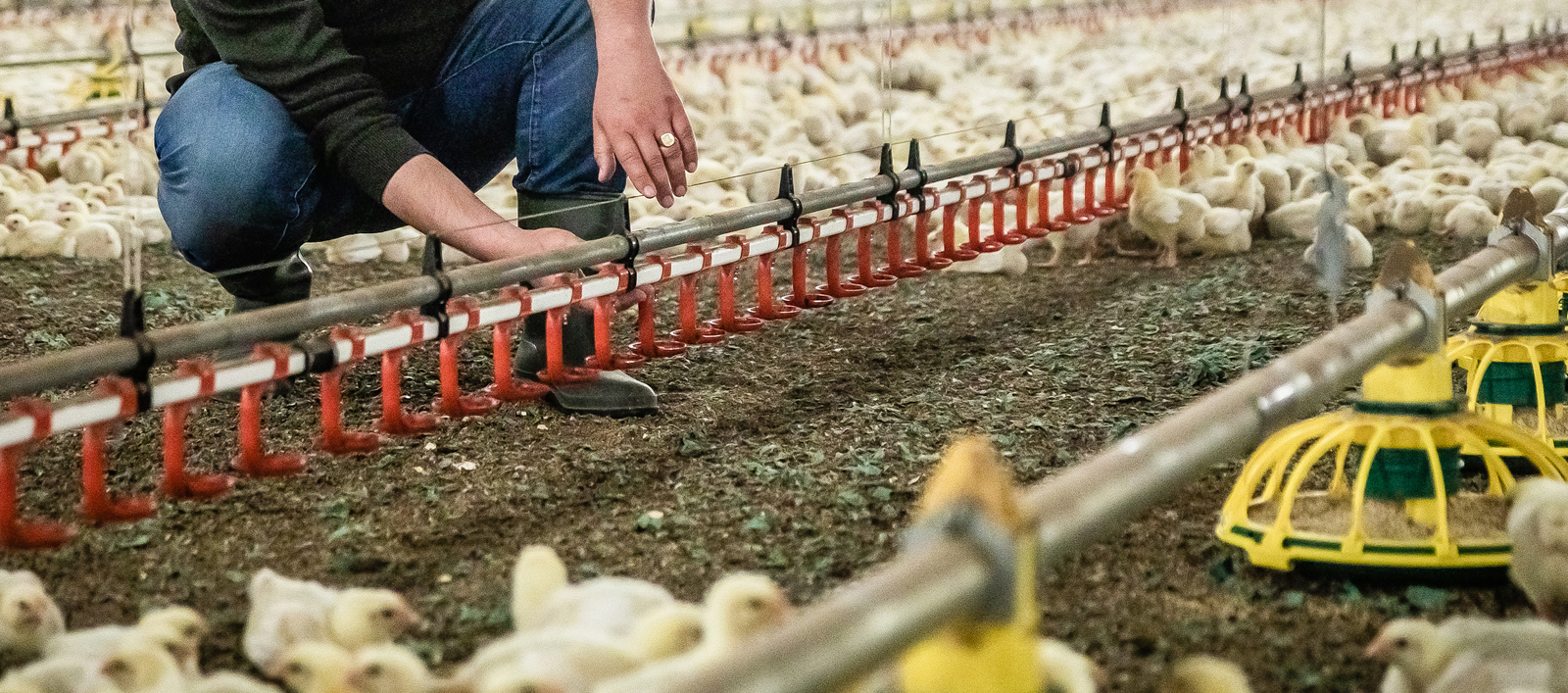We have said it before; water is an essential nutrient for poultry to perform well. Water is involved in all the body's processes and is therefore crucial for the growth of your birds and the quality of the eggs. The water usage is not the same as the water consumption. However, it can be one of the first indicators that something is wrong with your animals' health.
The most convenient way to monitor water usage is to check the water meter in the poultry house on a daily basis. The water meter registers the water that is used in your poultry house. Keep in mind; this is not solely the water that your birds drink, but also the water they waste while drinking. By monitoring and comparing water usage daily, you get a clear picture of your animals' drinking behavior. It is important you measure the usage around the same time every day to get a consistent outcome. It is also helpful to save the data as comparison material for the next rounds.
Also, we highly recommend you to walk through the house every day. This way, you can study your poultry's drinking behavior and, at the same time, check the drinking nipples for any leaks or blockages.

You can also choose to compare the water usage with the feed consumption, the so-called water/feed ratio. The intake of water and feed are linked: if a chicken does not drink enough, it will also eat less (and vice versa).
On average, a chicken drinks about 1.8 ml of water for every gram of feed. A deviation in this ratio, or the water consumption, can indicate possible problems in the drinking system or your poultrys' health.
If you encounter a sudden deviation in water usage, it could indicate problems in the drinking system. It is important to check your system before looking for other causes.
Several possible causes when water usage increases:
Several possible causes when water usage decreases:

If the deviation in water consumption is not caused by a defect in the drinking system or by water quality problems, then it is time to look further. The deviation may be caused by one of the following issues:
There is no exact answer on how much water a chicken needs. Factors like genetics, house climate, flock size, and feed influence the animals' water consumption. By monitoring the water usage daily, you get an indication of the water consumption, which will help you identify potential problems at an early stage. Most importantly, you can probably fix the issues by acting in time before they do too much damage.



 Qualité de l’eau et hygiène
Qualité de l’eau et hygiène  Systèmes d’abreuvement
Systèmes d’abreuvement  Solutions d'abreuvement pour porcs
Solutions d'abreuvement pour porcs 